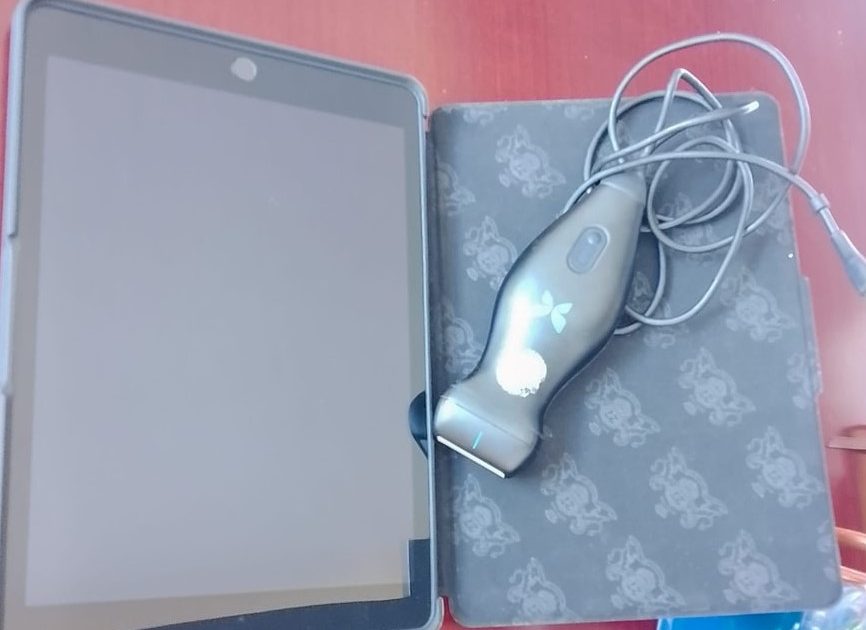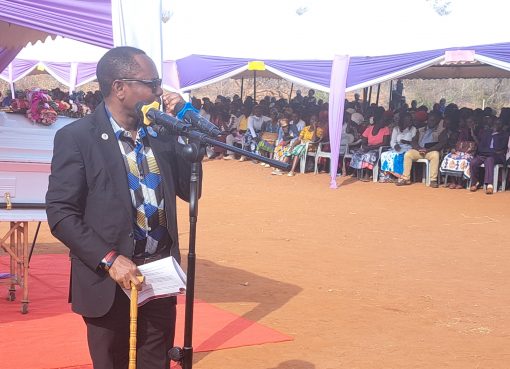Nakuru’s fight to reduce maternal and child mortality has received a major boost with the introduction of a modern Point of Care Ultrasound services (POCUS) equipment for use in remote and resource-poor areas.
The Sh. 49.5 million programme between the County Government and Kenyatta University is funded by the Bill and Melinda Gates Foundation.
County Executive Committee Member (CECM) in charge of Health services Ms Jacqueline Osoro said the technology will be a decisive step in combating maternal and child mortality in the devolved unit.
According to the 2014 Kenya Demographic and Health Survey, the national Maternal Mortality Ratio is currently at 362 deaths per 100,000 live births.
An ultrasound scan is a machine that uses high-frequency sound waves to create images showing the inside of the body.
The CECM disclosed that through the partnership, 99 healthcare workers at the primary level across the county have been equipped with the skills to perform and interpret basic obstetric ultrasound diagnostic tests, enabling timely interventions and promoting decision-making and management.
She explained “With the provision of 99 probes and iPads, valued at Sh 49.5 million, training, and equipping of 99 healthcare workers, we are confident that this project will have a significant impact on maternal health outcomes in Nakuru County. The trained cohort included nurse midwives, clinical officers, radiographers, and medical officers in all health facilities,”
The CECM went on, “this initiative, aligns with the World Health Organization’s (WHO) recommendation that every mother should have an ultrasound scan by 24 weeks of gestation,”
The ultrasound equipment has been designed for emergency departments and urgent care centres, as well as other clinical settings, and will operate from a compatible smart device connected to an ultrasound transducer.
Ms Osoro said the ultrasound would ease the process of pregnancy monitoring and diagnosis of related complications during home visits by healthcare workers and volunteers.
According to the CECM ultrasound scans are used to assess the baby’s development. An expectant mother with a normal pregnancy should go for at least one scan within the gestation period, she said.
For effective monitoring of a normal pregnancy, Ms Osoro indicated that the scan should ideally be done during the first trimester, between 18 and 26 to 30 weeks. The requirements are, however, different if doctors suspect that a pregnancy could be having complications.
“For a complicated pregnancy, the mother needs at least three scans, with the first at eight to 11 weeks, the second at 21 to 28 weeks and the third one at 31 weeks,” the CECM pointed out.
Ms Osoro said they are working on improving maternal health facilities and creating awareness at the grassroots on the importance of getting specialized care to ensure that they get 70 per cent live births by 2030.
She disclosed that to decongest the Mother and Child unit at the Nakuru Teaching and Referral Hospital (NTRH) they have decentralized services by equipping sub-county hospitals to offer maternity services.
“In our bid to offer quality services we started offering maternity health services in sub-county hospitals. We have Bondeni and Ronda maternity Hospitals among others that offer services to people within these areas. This has reduced the distance that a mother from Kaptembwa Estate was supposed to take to NTRH,” the CECM said.
Ms Osoro indicated that in the past four years, Nakuru County has managed to reduce its maternal mortality rate by nearly 50 per cent, thanks to its investments in infrastructure and technologies.
Statistics from the county’s health department show that maternal deaths dropped from 374 per 100,000 live births in 2017 to about 100 per 100,000 in January 2022.
The decline in deaths, in a county that was known for its high maternal deaths, is linked to improvements made in health facilities, including revamping maternity hospitals, and availability of enough staff and equipment to provide effective services to mothers and babies.
Ms Osoro observed that to give expectant mothers quality services and hope and reduce maternal mortality, the county government was channeling millions of shillings into revitalizing the facilities.
For instance, the county has revamped and equipped Bondeni Hospital, the oldest maternity centre in Nakuru East, to a Level Four facility.
More than 40 years old, the facility serves mothers from informal settlements that include Kivumbini, Lake View, Kwa Rhoda, Kaptembwa, Flamingo, Kaloleni and Bondeni.
Bondeni Hospital was set up in 1952 to take care of African women living on the south side of the railway in Nakuru city.
It was purely a maternity hospital but previously did not admit first-time mothers as it could not handle complications that could arise.
In 2017, the facility was upgraded to a Level Four hospital and allocated its own budget. Expectant mothers from remote areas of the county, including in sub-counties like Kuresoi South, Kuresoi North, Subukia and Molo, had to seek services at Nakuru Level Five Hospital.
However, this is now a thing of the past, with the revamping of maternity wings in hospitals in Bahati, Molo, Olenguruone, Naivasha and other far-flung areas.
At the Bahati hospital, the Kenya News Agency has established that up to 200 babies are delivered every month, up from about 30 initially.
“Before the Bahati Sub-County Hospital was given a facelift and equipped better, we used to travel all the way to the Nakuru Level Five Hospital to seek prenatal and postnatal services. However, this has changed and the services are available at the Bahati hospital,” said a resident Mary Nyambura.
Naivasha Sub-County Hospital also received a Sh330 million facelift. The Sh60 million ultramodern hospital has started offering maternity and surgery services.
The revamped maternity wings in various sub-counties have supplemented the 250-bed capacity Margaret Kenyatta Mother Baby Wing at Nakuru Level Five opened by First Lady Margaret Kenyatta in 2018.
The Sh450 million state-of-the-art maternity wing is the biggest in the larger Rift Valley region, the largest after Nairobi County’s Pumwani Hospital.
It also serves Bomet, Baringo, Narok, Kericho, Samburu, Laikipia and Nyandarua
Counties. Nakuru has also embraced technology to drastically reduce maternal deaths.
The introduction of smart watches that monitor the blood pressure of expectant mothers, for instance, has helped lower maternal deaths.
The devolved unit has partnered with Kabarak University to introduce the technology that monitors and identifies mothers with hypertensive disorders during pregnancies.
The use of smart watches has helped increase surveillance, early detection and identification of women who may develop the condition early enough for management.
“Nakuru County is determined to drastically reduce maternal deaths. The collaboration has helped reduce cases of women dying from pre-eclampsia and eclampsia, which are among the highest causes of death and complications at delivery,” Ms Osoro said.
Pre-eclampsia is a disorder characterized by high blood pressure and a protein in the urine causing seizures and loss of consciousness and often leads to eclampsia that causes excessive bleeding and other complications and even death in extreme cases.
By Anne Mwale





